Abstract
Description is given of methods that can evaluate the main functional elements of the immune system. Acute responses to exercise depend on the intensity and duration of the required activity relative to the individual's fitness level. Moderate endurance exercise causes either no change or an enhancement of such indices as total leucocyte count, granulocyte, monocyte, lymphocyte and natural killer cell count, total T cell count, helper:suppressor cell ratio, cell proliferation in response to mitogens, serum immunoglobulin levels, and in vitro immunoglobulin production. However, exhausting exercise tends to produce adverse changes in these same indices, particularly if the physical activity is accompanied by environmental or competitive stress. Moderate, appropriately graded training reduces reactions to any given absolute intensity of exercise. When pursuing a more demanding training regimen, it is important that the exerciser optimize immune responses. If athletic preparation is pursued to the level of staleness and/or muscle damage, it can have substantial negative implications for many aspects of immune function, including resistance to acute infections, HIV infections, ageing, cancer and other conditions influenced by the immune system.
Full text
PDF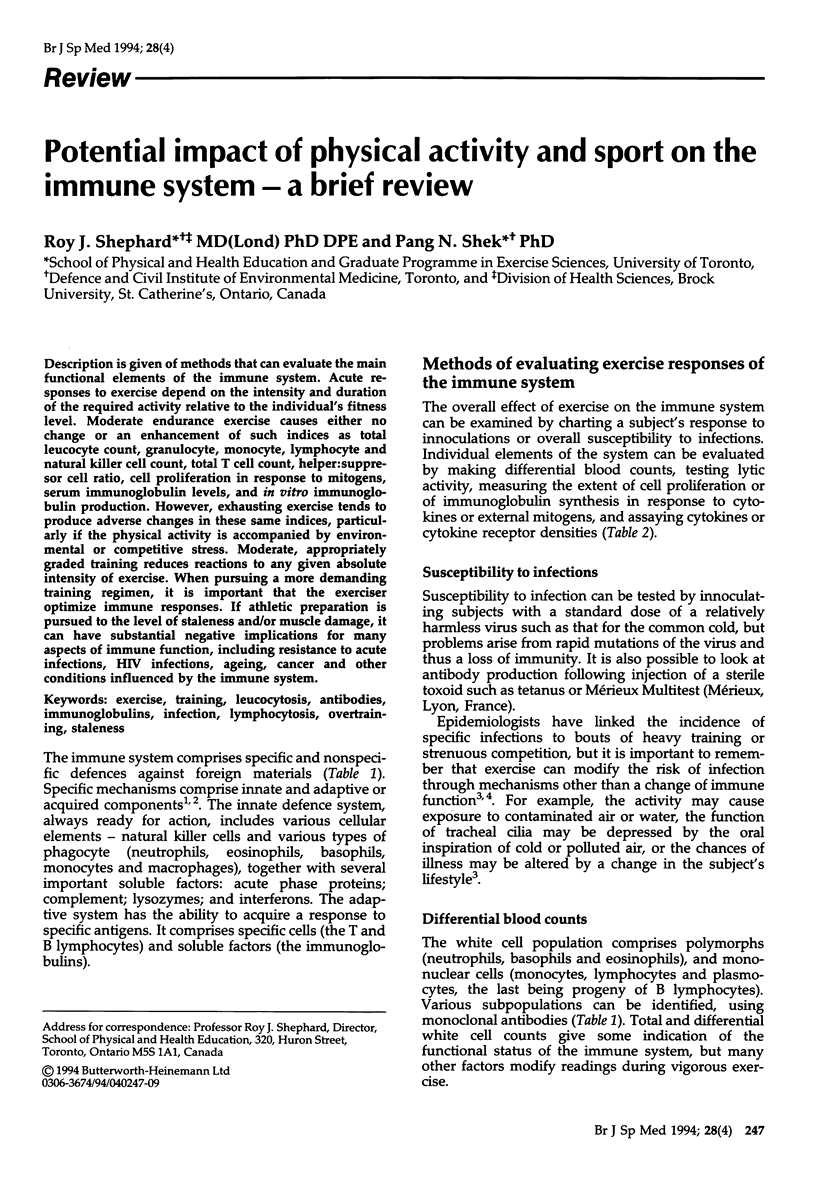

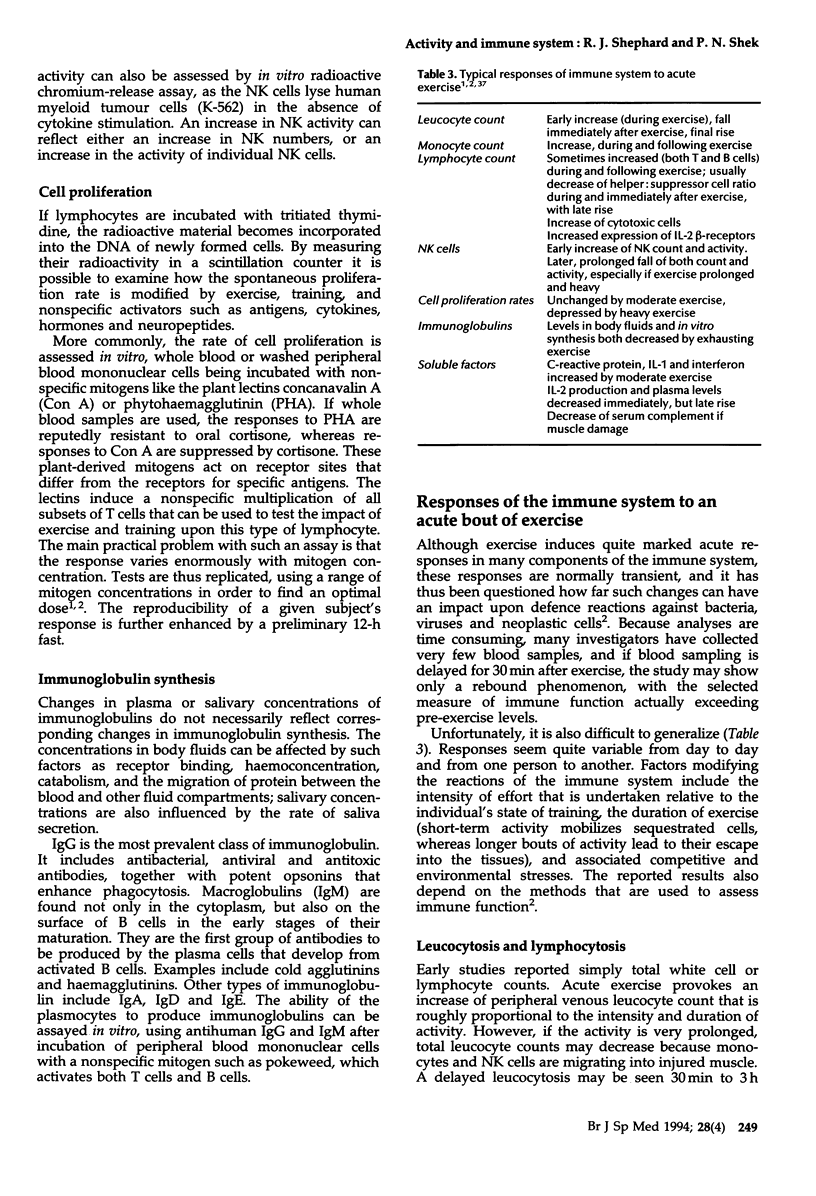
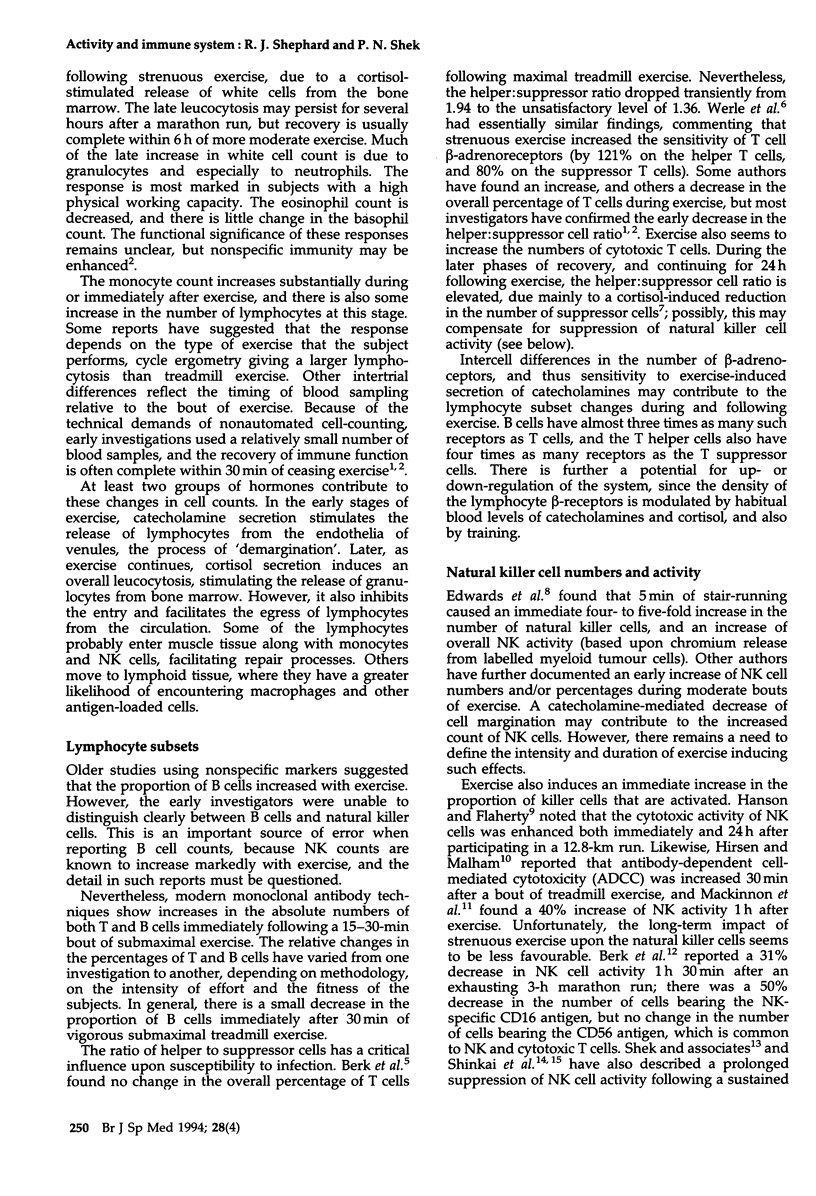
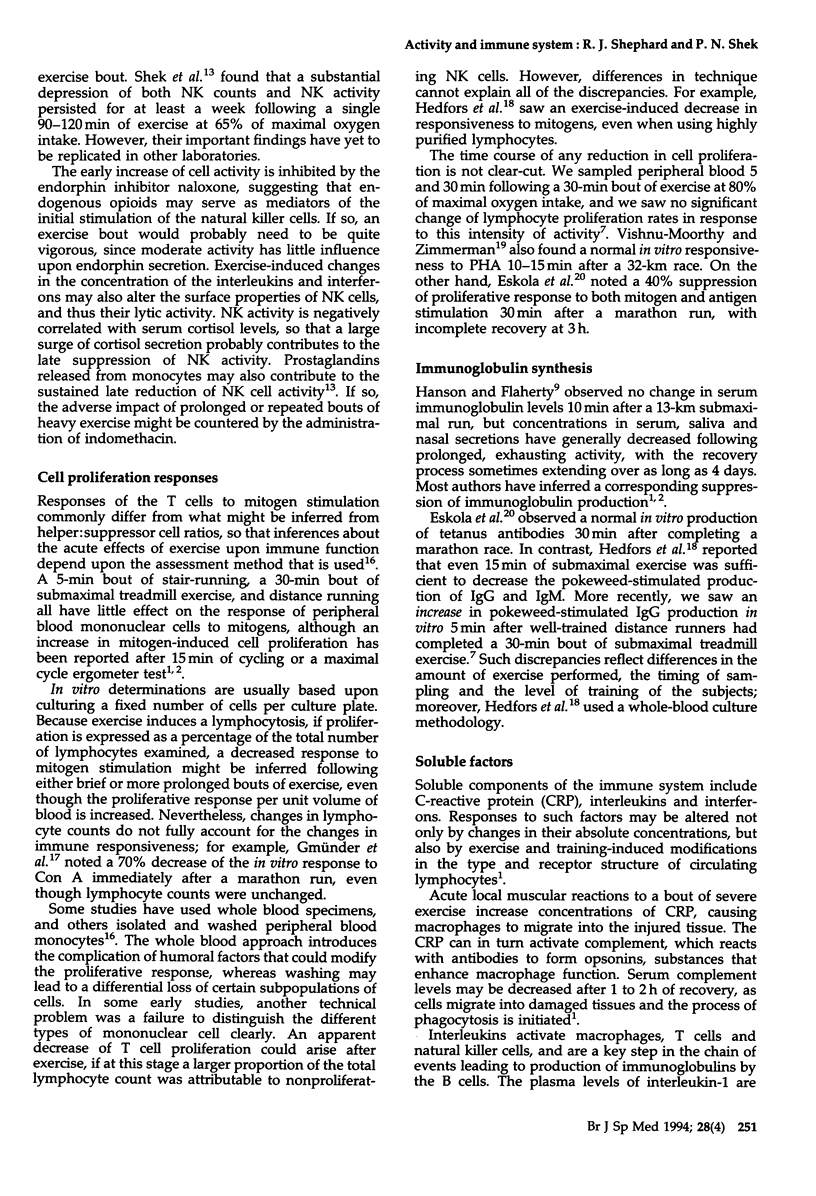
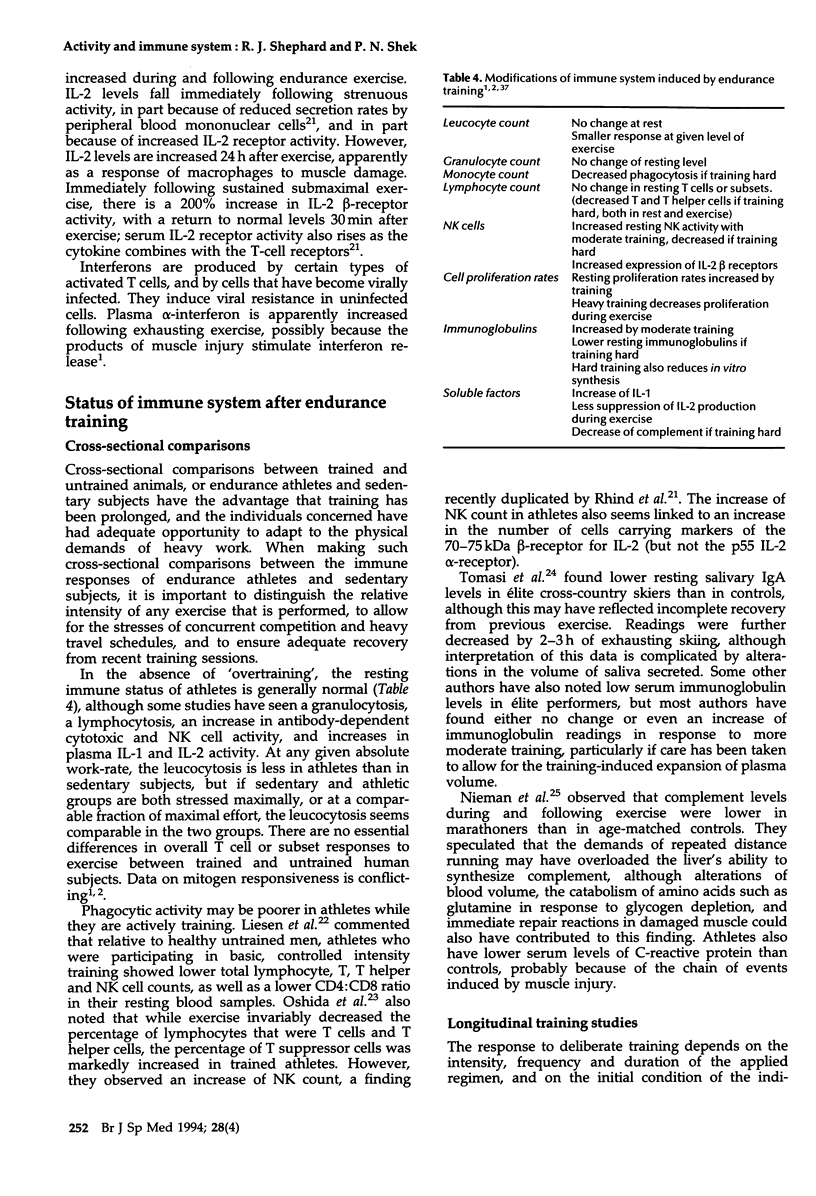
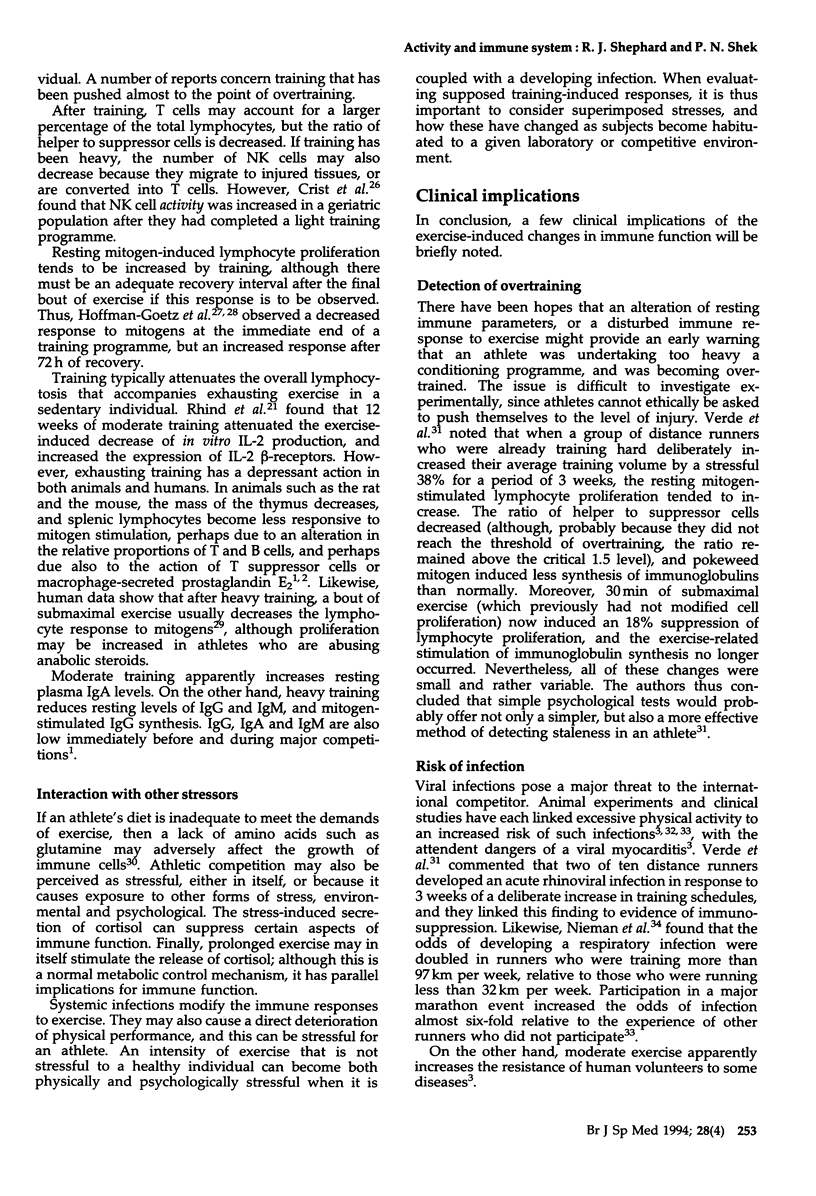
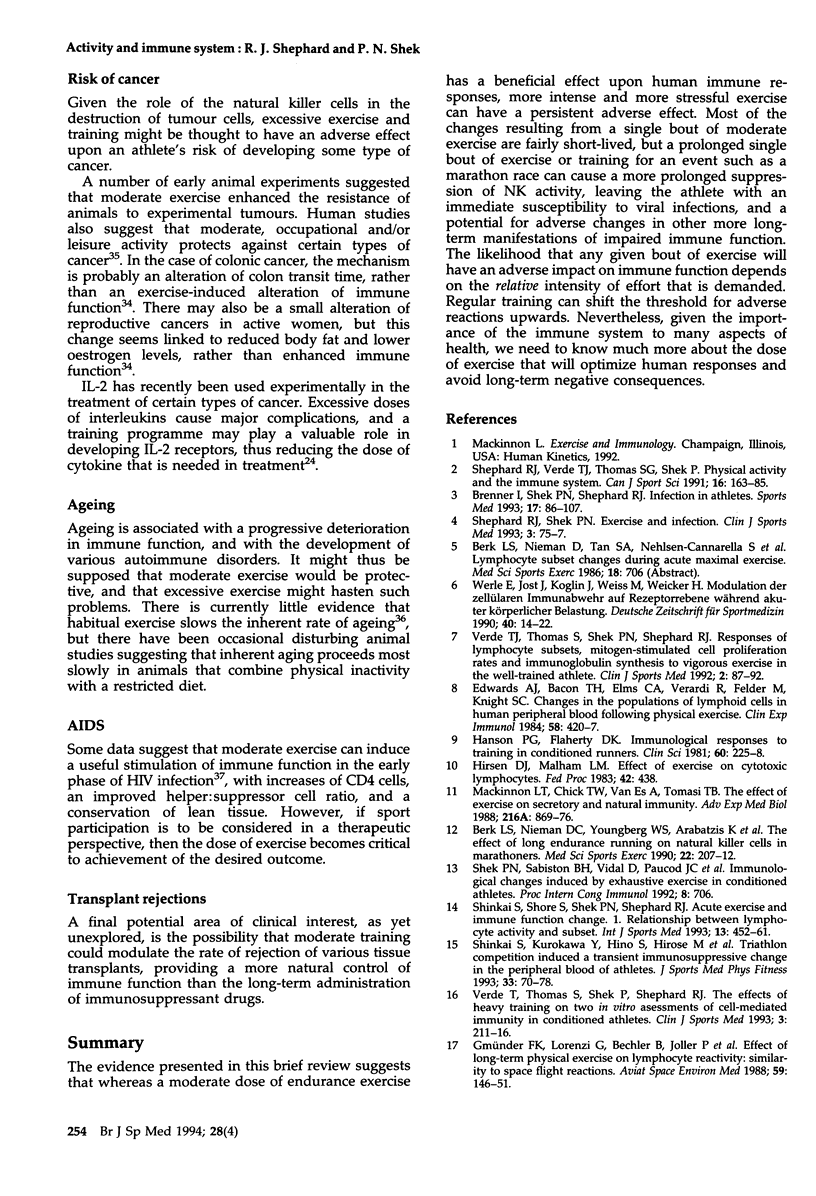
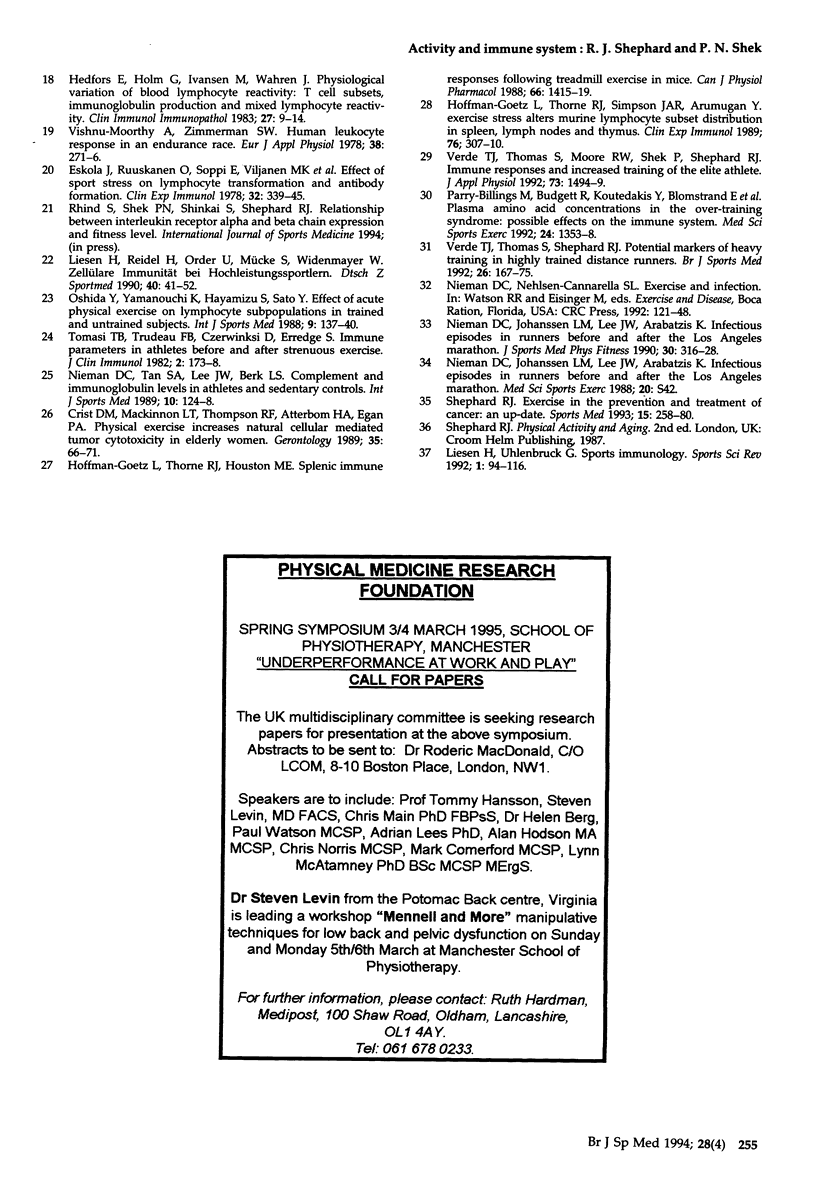
Selected References
These references are in PubMed. This may not be the complete list of references from this article.
- Berk L. S., Nieman D. C., Youngberg W. S., Arabatzis K., Simpson-Westerberg M., Lee J. W., Tan S. A., Eby W. C. The effect of long endurance running on natural killer cells in marathoners. Med Sci Sports Exerc. 1990 Apr;22(2):207–212. [PubMed] [Google Scholar]
- Brenner I. K., Shek P. N., Shephard R. J. Infection in athletes. Sports Med. 1994 Feb;17(2):86–107. doi: 10.2165/00007256-199417020-00002. [DOI] [PMC free article] [PubMed] [Google Scholar]
- Crist D. M., Mackinnon L. T., Thompson R. F., Atterbom H. A., Egan P. A. Physical exercise increases natural cellular-mediated tumor cytotoxicity in elderly women. Gerontology. 1989;35(2-3):66–71. doi: 10.1159/000213001. [DOI] [PubMed] [Google Scholar]
- Edwards A. J., Bacon T. H., Elms C. A., Verardi R., Felder M., Knight S. C. Changes in the populations of lymphoid cells in human peripheral blood following physical exercise. Clin Exp Immunol. 1984 Nov;58(2):420–427. [PMC free article] [PubMed] [Google Scholar]
- Eskola J., Ruuskanen O., Soppi E., Viljanen M. K., Järvinen M., Toivonen H., Kouvalainen K. Effect of sport stress on lymphocyte transformation and antibody formation. Clin Exp Immunol. 1978 May;32(2):339–345. [PMC free article] [PubMed] [Google Scholar]
- Gmünder F. K., Lorenzi G., Bechler B., Joller P., Müller J., Ziegler W. H., Cogoli A. Effect of long-term physical exercise on lymphocyte reactivity: similarity to spaceflight reactions. Aviat Space Environ Med. 1988 Feb;59(2):146–151. [PubMed] [Google Scholar]
- Hanson P. G., Flaherty D. K. Immunological responses to training in conditioned runners. Clin Sci (Lond) 1981 Feb;60(2):225–228. doi: 10.1042/cs0600225. [DOI] [PubMed] [Google Scholar]
- Hedfors E., Holm G., Ivansen M., Wahren J. Physiological variation of blood lymphocyte reactivity: T-cell subsets, immunoglobulin production, and mixed-lymphocyte reactivity. Clin Immunol Immunopathol. 1983 Apr;27(1):9–14. doi: 10.1016/0090-1229(83)90051-x. [DOI] [PubMed] [Google Scholar]
- Hoffman-Goetz L., Thorne R. J., Houston M. E. Splenic immune responses following treadmill exercise in mice. Can J Physiol Pharmacol. 1988 Nov;66(11):1415–1419. doi: 10.1139/y88-230. [DOI] [PubMed] [Google Scholar]
- Hoffman-Goetz L., Thorne R., Simpson J. A., Arumugam Y. Exercise stress alters murine lymphocyte subset distribution in spleen, lymph nodes and thymus. Clin Exp Immunol. 1989 May;76(2):307–310. [PMC free article] [PubMed] [Google Scholar]
- Mackinnon L. T., Chick T. W., van As A., Tomasi T. B. The effect of exercise on secretory and natural immunity. Adv Exp Med Biol. 1987;216A:869–876. doi: 10.1007/978-1-4684-5344-7_102. [DOI] [PubMed] [Google Scholar]
- Moorthy A. V., Zimmerman S. W. Human leukocyte response to an endurance race. Eur J Appl Physiol Occup Physiol. 1978 May 30;38(4):271–276. doi: 10.1007/BF00423109. [DOI] [PubMed] [Google Scholar]
- Nieman D. C., Johanssen L. M., Lee J. W., Arabatzis K. Infectious episodes in runners before and after the Los Angeles Marathon. J Sports Med Phys Fitness. 1990 Sep;30(3):316–328. [PubMed] [Google Scholar]
- Nieman D. C., Tan S. A., Lee J. W., Berk L. S. Complement and immunoglobulin levels in athletes and sedentary controls. Int J Sports Med. 1989 Apr;10(2):124–128. doi: 10.1055/s-2007-1024887. [DOI] [PubMed] [Google Scholar]
- Oshida Y., Yamanouchi K., Hayamizu S., Sato Y. Effect of acute physical exercise on lymphocyte subpopulations in trained and untrained subjects. Int J Sports Med. 1988 Apr;9(2):137–140. doi: 10.1055/s-2007-1024995. [DOI] [PubMed] [Google Scholar]
- Parry-Billings M., Budgett R., Koutedakis Y., Blomstrand E., Brooks S., Williams C., Calder P. C., Pilling S., Baigrie R., Newsholme E. A. Plasma amino acid concentrations in the overtraining syndrome: possible effects on the immune system. Med Sci Sports Exerc. 1992 Dec;24(12):1353–1358. [PubMed] [Google Scholar]
- Shephard R. J. Exercise in the prevention and treatment of cancer. An update. Sports Med. 1993 Apr;15(4):258–280. doi: 10.2165/00007256-199315040-00004. [DOI] [PubMed] [Google Scholar]
- Shephard R. J. Meeting the blood flow needs of exercise. Can J Sport Sci. 1991 Sep;16(3):163–163. [PubMed] [Google Scholar]
- Shinkai S., Kurokawa Y., Hino S., Hirose M., Torii J., Watanabe S., Watanabe S., Shiraishi S., Oka K., Watanabe T. Triathlon competition induced a transient immunosuppressive change in the peripheral blood of athletes. J Sports Med Phys Fitness. 1993 Mar;33(1):70–78. [PubMed] [Google Scholar]
- Shinkai S., Shore S., Shek P. N., Shephard R. J. Acute exercise and immune function. Relationship between lymphocyte activity and changes in subset counts. Int J Sports Med. 1992 Aug;13(6):452–461. doi: 10.1055/s-2007-1021297. [DOI] [PubMed] [Google Scholar]
- Tomasi T. B., Trudeau F. B., Czerwinski D., Erredge S. Immune parameters in athletes before and after strenuous exercise. J Clin Immunol. 1982 Jul;2(3):173–178. doi: 10.1007/BF00915219. [DOI] [PubMed] [Google Scholar]
- Verde T. J., Thomas S. G., Moore R. W., Shek P., Shephard R. J. Immune responses and increased training of the elite athlete. J Appl Physiol (1985) 1992 Oct;73(4):1494–1499. doi: 10.1152/jappl.1992.73.4.1494. [DOI] [PubMed] [Google Scholar]
- Verde T., Thomas S., Shephard R. J. Potential markers of heavy training in highly trained distance runners. Br J Sports Med. 1992 Sep;26(3):167–175. doi: 10.1136/bjsm.26.3.167. [DOI] [PMC free article] [PubMed] [Google Scholar]


